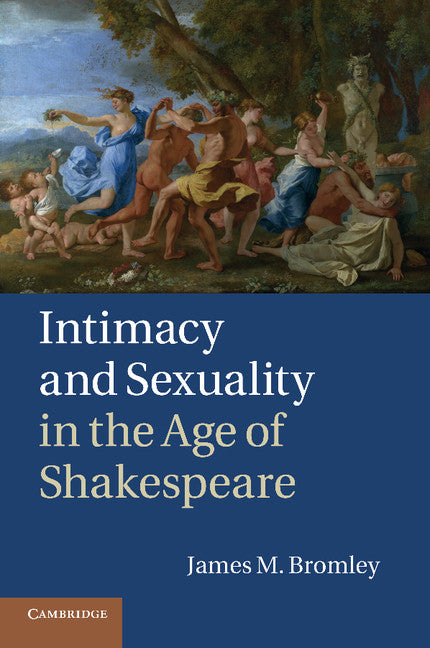Freshly Printed - allow 8 days lead
Couldn't load pickup availability
Intimacy and Sexuality in the Age of Shakespeare
Bromley investigates Renaissance drama, poetry and prose through the lens of 'non-standard' and experimental forms of affection.
James M. Bromley (Author)
9781107693852, Cambridge University Press
Paperback / softback, published 19 September 2013
220 pages, 2 b/w illus.
22.9 x 15.2 x 1.3 cm, 0.33 kg
'Sharp and incisive, creative as it is contextualised, Intimacy and Sexuality in the Age of Shakespeare adds much to current debate about the social meanings of marriage, reminding us of what we might be losing, even as we gain expanded protections for some of our sexual intimacies.' Holly Dugan, Modern Philology
James Bromley argues that Renaissance texts circulate knowledge about a variety of non-standard sexual practices and intimate life narratives, including non-monogamy, anal eroticism, masochism and cross-racial female homoeroticism. Rethinking current assumptions about intimacy in Renaissance drama, poetry and prose, the book blends historicized and queer approaches to embodiment, narrative and temporality. An important contribution to Renaissance literary studies, queer theory and the history of sexuality, the book demonstrates the relevance of Renaissance literature to today. Through close readings of William Shakespeare's 'problem comedies', Christopher Marlowe's Hero and Leander, plays by Beaumont and Fletcher, Thomas Middleton's The Nice Valour and Lady Mary Wroth's sonnet sequence Pamphilia to Amphilanthus and her prose romance The Urania, Bromley re-evaluates notions of the centrality of deep, abiding affection in Renaissance culture and challenges our own investment in a narrowly defined intimate sphere.
Introduction: interiority, futurity, and affective relations in Renaissance literature
1. Intimacy and narrative closure in Christopher Marlowe's Hero and Leander
2. A funny thing happened on the way to the altar: the anus, marriage, and narrative in Shakespeare
3. Social status and the intimacy of masochistic sexual practice in Beaumont and Fletcher and Middleton
4. Nuns and nationhood: intimacy in convents in Renaissance drama
5. Female homoeroticism, race, and public forms of intimacy in the works of Lady Mary Wroth
Epilogue: invitation to a queer life.
Subject Areas: Shakespeare studies & criticism [DSGS], Literary studies: c 1500 to c 1800 [DSBD]


